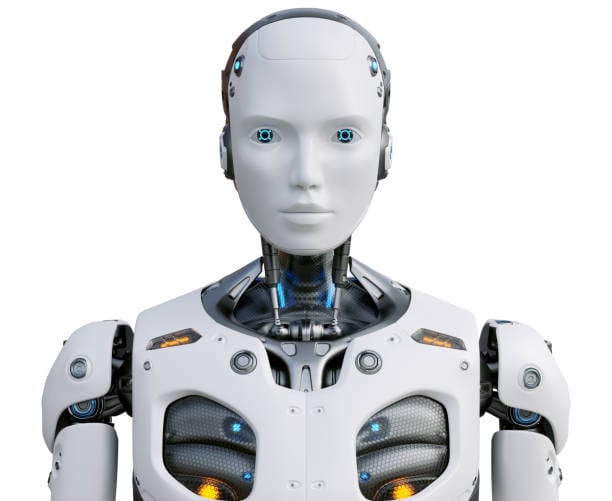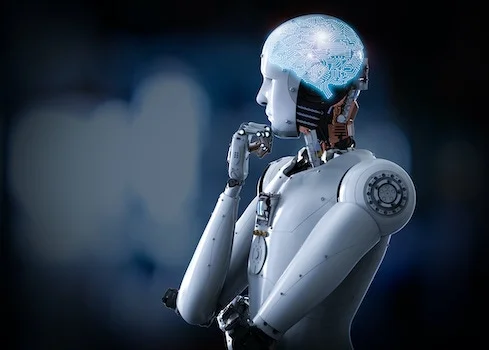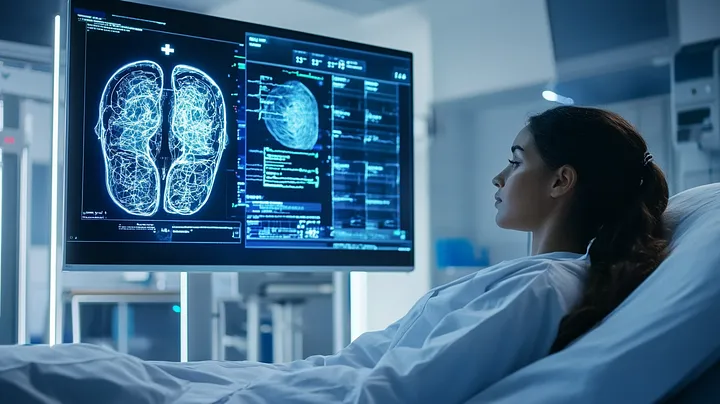Imagine walking into a room and seeing a figure standing by the window. Its shape is familiar: two arms, two legs, a head. But when it turns to face you, there’s something uncanny about it. The eyes are not quite human. The skin — if it has any — is synthetic. Beneath the surface hums a network of motors, wires, and processors. You are looking at a humanoid robot — a creation of science and engineering designed to imitate the human form, and in many cases, the human way of moving, interacting, and thinking.
Humanoid robots are not simply machines shaped like people. They are the embodiment of a centuries-old human dream: to create life in our own image. From ancient myths of artificial beings to modern research labs, the idea has persisted, powered by both curiosity and ambition. Today, these robots are emerging from the pages of science fiction into the real world, taking steps — sometimes literally — toward roles that once seemed impossible.
Defining a Humanoid Robot
A humanoid robot is, at its core, a robotic system designed to replicate aspects of human structure and, in some cases, behavior. This can mean having a torso, a head, two arms, and two legs, arranged in the familiar bipedal configuration. But it can also extend to mimicking human facial expressions, gestures, and even speech patterns.
What sets humanoid robots apart from other robots is not just their anatomy but their intended interaction with human environments. Our world is built for human bodies — the height of door handles, the spacing of steps, the shape of tools. A humanoid robot, by resembling us, can navigate and operate in spaces already designed for humans without needing those environments to be redesigned.
Some humanoid robots are designed for practical purposes, such as assisting in workplaces, performing dangerous tasks, or aiding the elderly. Others are built as research platforms, helping scientists study human motion, social interaction, and artificial intelligence. And a few are made simply to explore the artistry of bringing human-like form and behavior into mechanical life.
The Ancient Roots of a Modern Dream
The idea of building human-like machines is far older than modern robotics. In the myths of ancient Greece, Hephaestus, the god of craftsmanship, created golden automata — lifelike beings that could move and speak. In China, the 3rd century BCE text Liezi describes an engineer presenting an artificial man to King Mu of Zhou. Medieval Europe had clockwork automata — intricate mechanical figures that played music, wrote letters, or struck bells.
These early creations were not robots in the modern sense; they lacked autonomous decision-making and relied entirely on mechanical systems. But they captured the imagination, planting seeds for future generations of inventors. The dream of a human-like machine has always been more than technical — it is tied to our curiosity about ourselves. To create a humanoid robot is, in a way, to hold up a mirror to humanity.
The Rise of Modern Humanoids
The modern era of humanoid robots began in the 20th century, shaped by advances in electronics, computing, and material science. Early examples were crude by today’s standards but groundbreaking in their time. In the 1920s, the world marveled at “Eric,” a British robot capable of standing, moving its arms, and delivering pre-recorded speeches.
The real leap came with the invention of digital computers and microprocessors in the mid-20th century. Suddenly, robots could be programmed to react to sensors, process information, and make decisions. By the late 20th century, research labs in Japan, the United States, and Europe began focusing on bipedal locomotion — the challenge of making robots walk like humans.
Japan became a leader in this field. In the 1980s and 1990s, Honda’s robotics division developed a series of prototypes that culminated in ASIMO, unveiled in 2000. ASIMO could walk, run, climb stairs, and interact with people, and it became an icon of humanoid robotics.
Why Build Robots That Look Like Us?
There is a practical reason for the human shape: the world we inhabit is designed for our bodies. Doors, stairs, vehicles, furniture, and tools are all built with human proportions in mind. A robot with a similar shape can use these things without modification.
But there is also a social dimension. Humans are more likely to feel comfortable interacting with machines that behave and communicate in familiar ways. This is especially important for robots designed to work in healthcare, education, or customer service. Facial expressions, body language, and voice tone can make the difference between a cold machine and a companion.
That said, there is a fine balance to strike. Too human-like, and a robot may fall into the uncanny valley — the unsettling feeling when something looks almost, but not quite, human. Designers must decide how realistic to make their creations, considering the purpose and the emotional reactions of users.
Engineering the Human Form
Building a humanoid robot is one of the most complex challenges in robotics. The human body is an extraordinary combination of strength, dexterity, and adaptability. Replicating even a fraction of its capabilities requires the integration of multiple engineering fields.
The mechanical design must consider the skeleton-like structure, joints, and actuators (motors or artificial muscles) that provide movement. These parts must be strong enough to support weight yet light enough for efficient motion.
The control systems — often powered by advanced microprocessors — must process sensor data in real time to maintain balance, coordinate limbs, and adapt to changing terrain. Walking is deceptively complex: it involves shifting weight, predicting motion, and reacting to disturbances in fractions of a second.
Sensors act as the robot’s senses: cameras for vision, microphones for hearing, gyroscopes and accelerometers for balance, tactile sensors for touch.
On top of this, artificial intelligence allows the robot to interpret sensory data, recognize objects and people, understand speech, and plan actions. The AI may be narrow, focused on specific tasks, or broad, enabling more general interaction.
Faces That Speak Without Words
A subset of humanoid robots focuses not on walking but on social interaction. These robots may have expressive faces capable of smiling, frowning, or showing curiosity. Motors beneath a soft outer surface pull synthetic skin into expressions, while cameras track the expressions of human users.
One famous example is Sophia, developed by Hanson Robotics, which has been designed to engage in conversation and display a wide range of facial expressions. While Sophia’s conversational abilities are partly scripted and partly AI-driven, the result can be surprisingly engaging — and sometimes unnerving.
The goal in social humanoid robotics is not to create perfect human replicas but to foster natural, comfortable interactions. A robot that can nod in understanding, glance toward an object, or widen its eyes in surprise can bridge the gap between human and machine.
Walking the Line Between Fiction and Reality
Popular culture has shaped our expectations of humanoid robots. From C-3PO in Star Wars to androids in Westworld, fictional robots often have human-level intelligence, emotions, and adaptability. In reality, humanoid robots are far more limited. They can walk, talk, and perform impressive demonstrations, but they are still bound by programming, hardware limits, and the current state of AI.
Yet progress is steady. Modern robots like Atlas by Boston Dynamics demonstrate remarkable agility — running, jumping, and even performing backflips. While these feats are partly choreographed, they showcase the rapid advances in balance, motion planning, and mechanical design.
The Role of Humanoids in Society
Today, humanoid robots are beginning to find roles outside the lab. In Japan, robots assist in elder care facilities, providing companionship and basic help. In airports, they guide passengers and answer questions. In education, they help teach languages or engage students in STEM subjects.
In hazardous environments, humanoid robots can take the place of human workers — in disaster zones, space missions, or dangerous industrial settings. NASA’s Robonaut is designed to assist astronauts aboard the International Space Station, using its human-like hands to handle tools built for humans.
Challenges on the Road Ahead
For all their promise, humanoid robots face significant challenges. Walking on two legs is energy-intensive and mechanically complex. Battery life limits how long a robot can operate without recharging. Perception — understanding the world through sensors — remains imperfect, especially in unpredictable environments.
Social acceptance is another hurdle. People may resist interacting with humanoid robots, either due to fear of job displacement, discomfort with lifelike machines, or skepticism about their usefulness. Designers must navigate these concerns with transparency and empathy.
There is also the ethical dimension: as humanoid robots become more capable, questions arise about responsibility, privacy, and the boundaries between human and machine. How much decision-making power should a robot have? How should it handle sensitive personal information?
The Emotional Frontier
The emotional aspect of humanoid robots is perhaps the most intriguing and controversial. Humans are wired to respond to faces, voices, and gestures. Even knowing a robot is a machine, we may still feel affection, trust, or empathy toward it. This can be beneficial — for example, in therapy for children with autism — but it can also blur lines, creating relationships that are one-sided or even manipulative.
As robots become more advanced, society will need to grapple with these emotional bonds. Can a robot truly care for a person? Or is it simply simulating care? The answer may shape how we integrate humanoids into daily life.
Beyond the Horizon
The long-term vision for humanoid robots extends far beyond simple assistance. Some researchers imagine robots working alongside humans in every field, from construction to creative arts. Others envision them exploring other planets, building habitats before human arrival.
Advances in AI, materials science, and energy storage will push the boundaries of what is possible. In time, we may see humanoid robots that can learn new skills on the fly, adapt to unfamiliar environments, and collaborate with humans as true partners.
Yet the core of the dream remains unchanged: to create a machine that not only looks like us but moves, thinks, and perhaps even feels like us. Whether that goal is achievable — and whether it is desirable — are questions we will keep asking as technology marches forward.
Conclusion: The Mirror We Build
A humanoid robot is more than a piece of technology. It is a reflection of human ambition, curiosity, and creativity. It is the product of centuries of imagination, from myth to mechanics. And it is a reminder that in trying to create machines like ourselves, we are also studying what it means to be human.
Every joint, sensor, and line of code in a humanoid robot carries with it a fragment of that ancient dream. Whether they become our helpers, companions, or something entirely new, humanoid robots will continue to challenge our ideas about life, intelligence, and the boundaries between flesh and steel.






